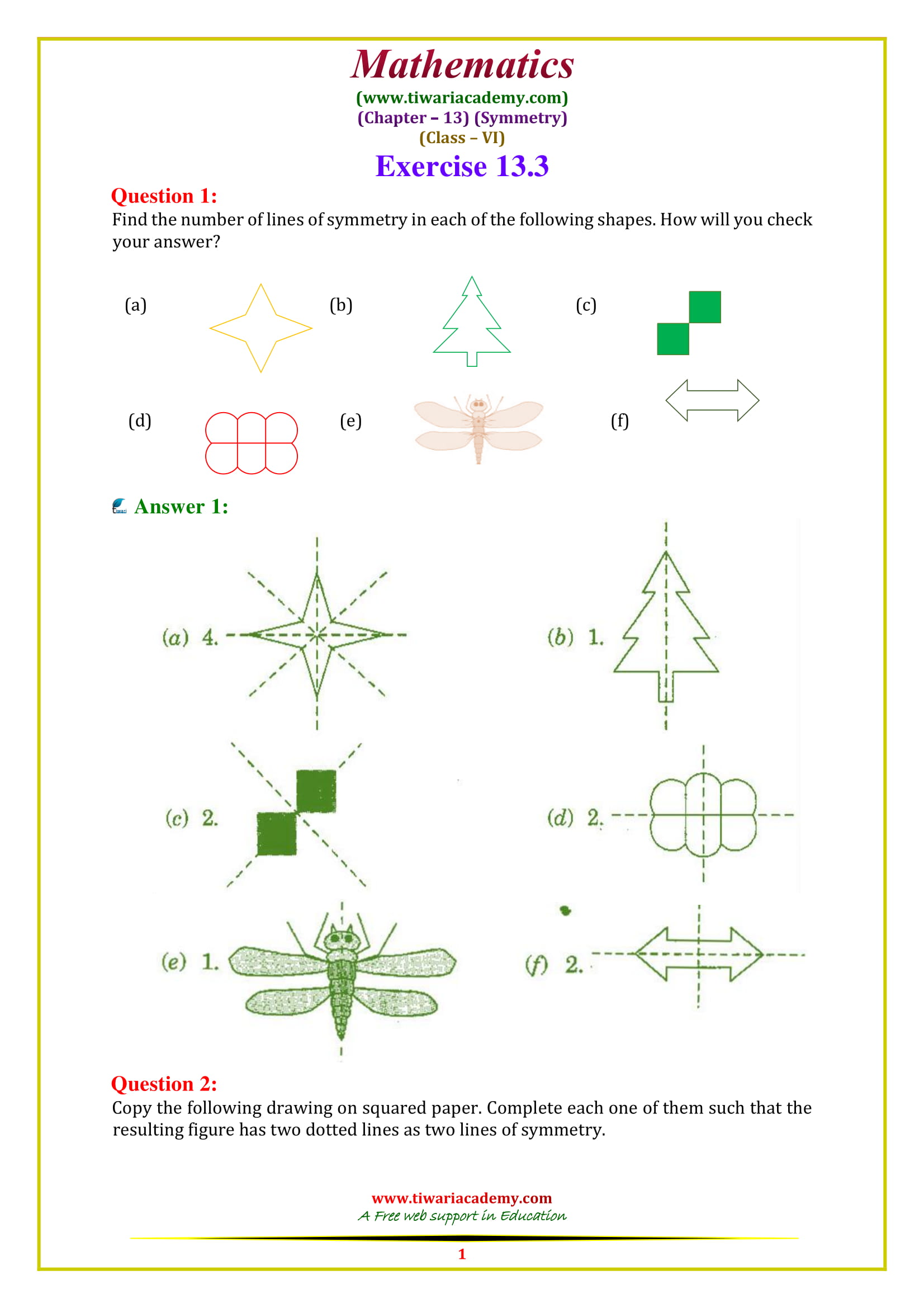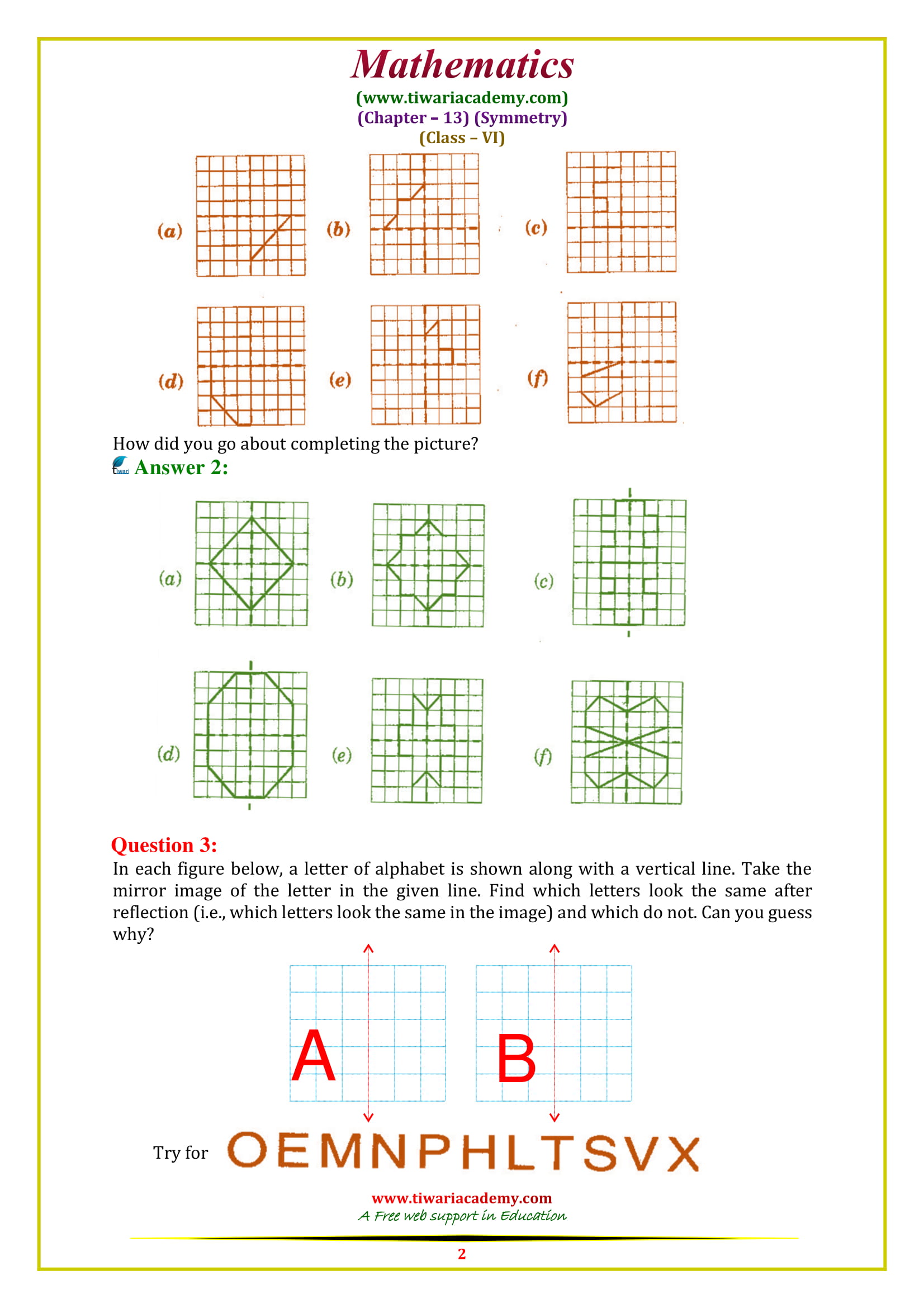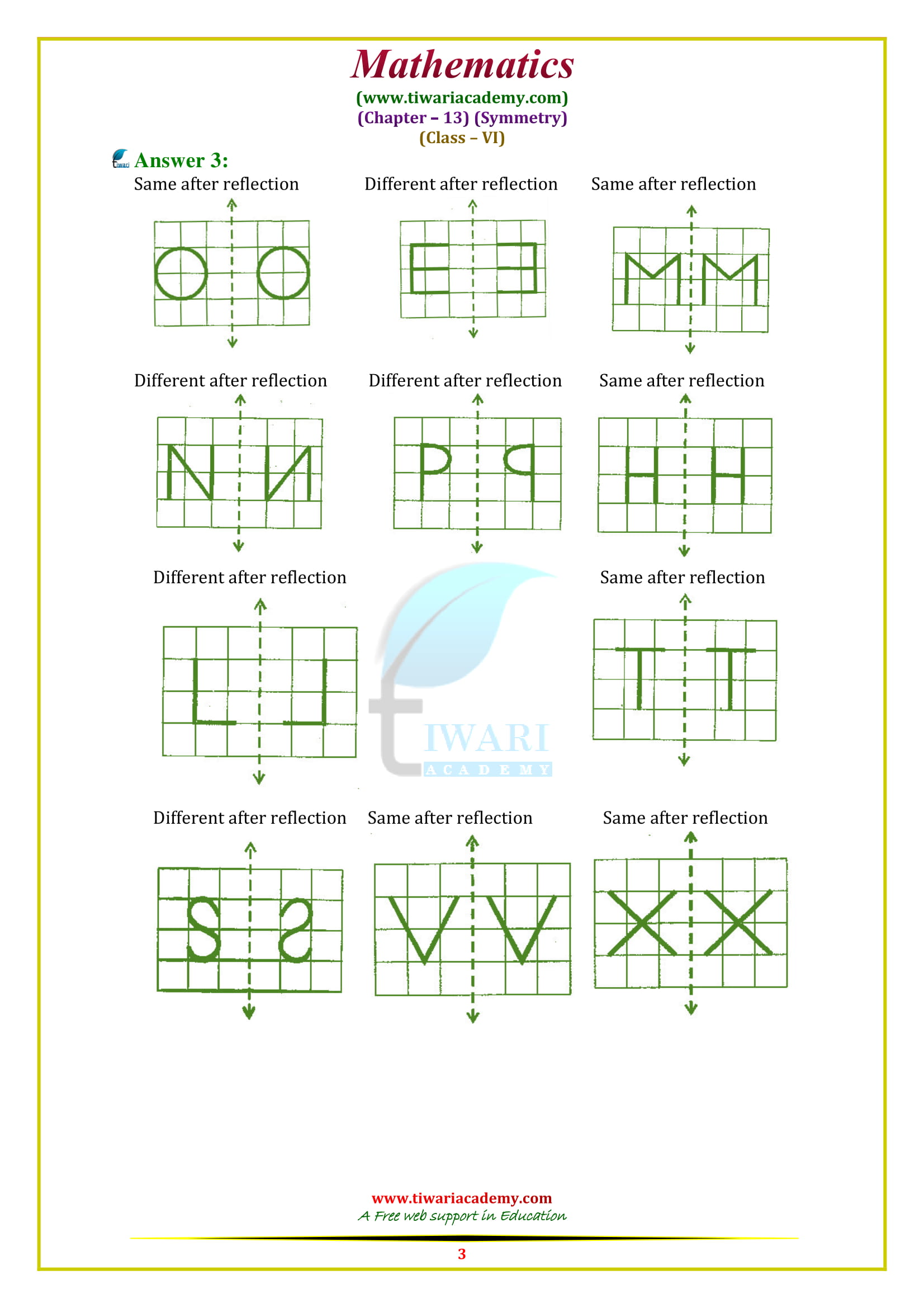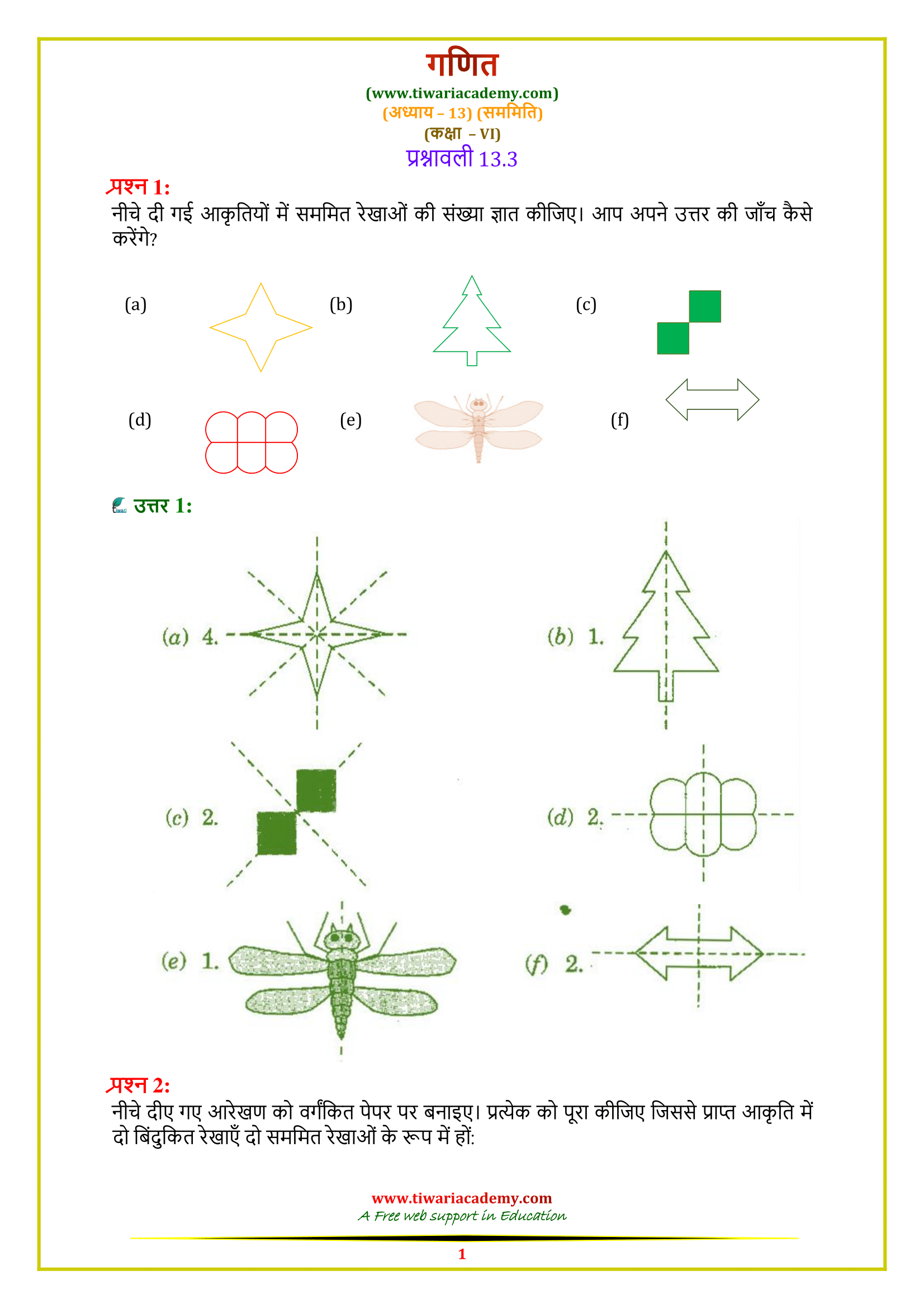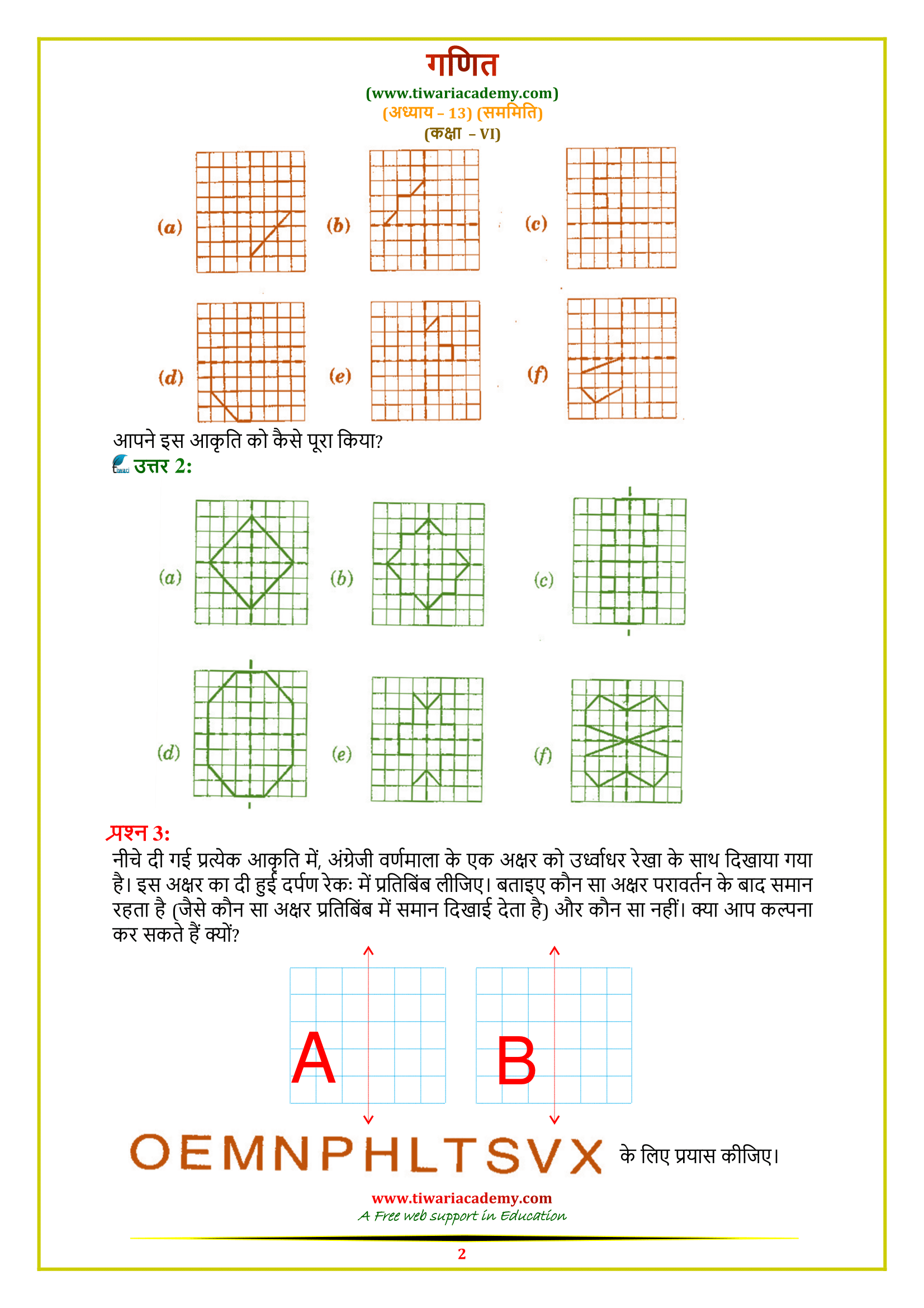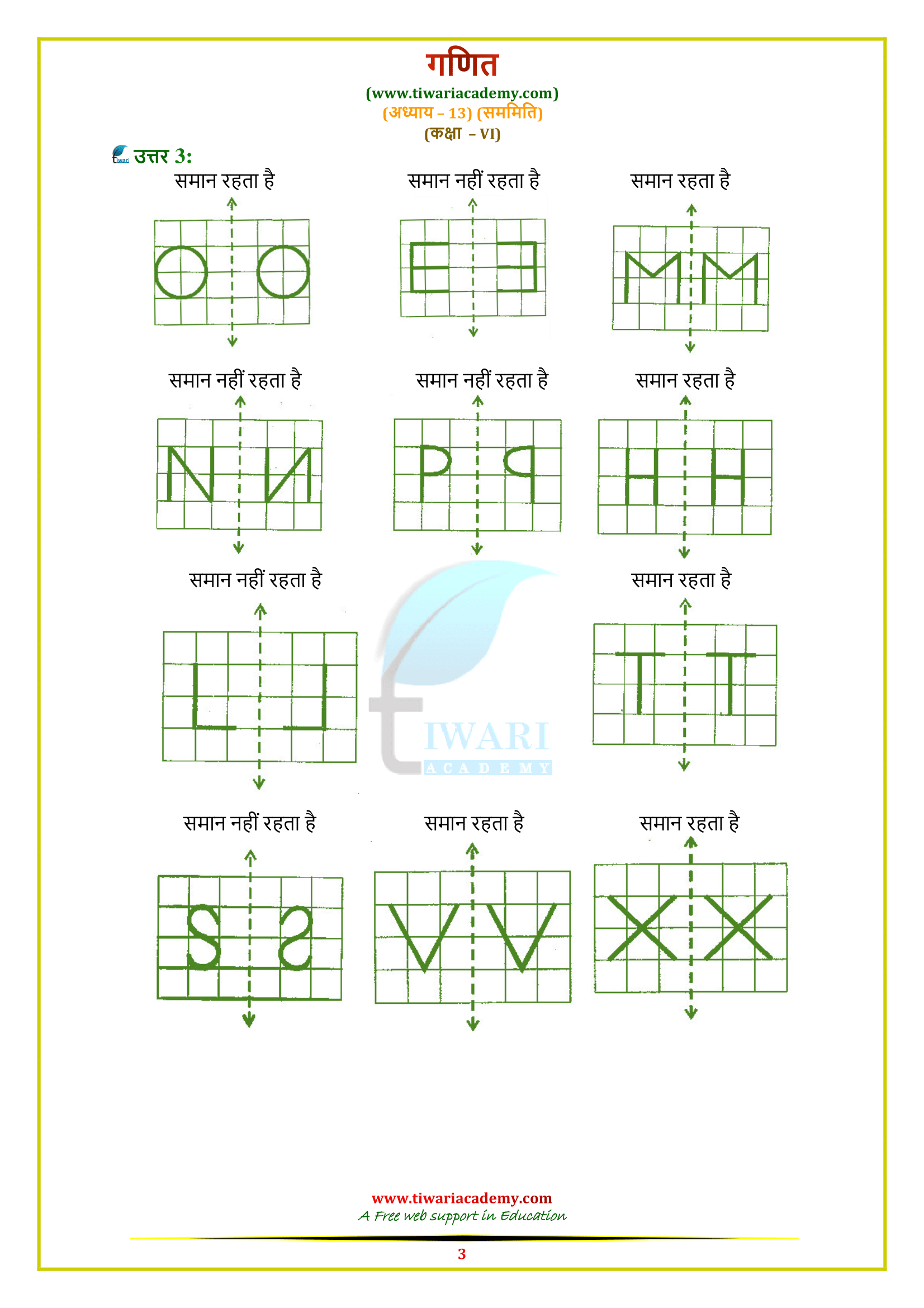NCERT Solutions for Class 6 Maths Chapter 13 Exercise 13.3 in Hindi and English Medium updated for CBSE and State Board Exams. Get the latest, easy-to-follow NCERT answers for 6th Class Maths, Chapter 13 Exercise 13.3 on Symmetry. Available in Hindi and English at Tiwari Academy, suitable for all school boards.
6th Maths Exercise 13.3 Solutions in Hindi and English Medium
Class 6 Maths Chapter 13 Exercise 13.3 Solution
Class VI Mathematics NCERT (https://ncert.nic.in/) Textbook Ex. 13.3 solutions of Symmetry in English and Hindi Medium prepared for CBSE students according to Session 2025-26. All the contents are in PDF as well as Videos solution format following step by step procedure. Class 6 math exercise 13.3 represents the number of line of symmetry of English alphabets and other figures also. It also helps to form some figures which are symmetrical with more than two axis.
| Class: 6 | Mathematics |
| Chapter: 13 | Exercise: 13.3 |
| Chapter Name: | Symmetry |
| Content: | NCERT Textbook’s Solutions |
| Medium: | Hindi and English |
Class 6 Maths Chapter 13 Exercise 13.3 Solution in Videos
(viii) Symmetry of a Rectangle:
A rectangle has two lines of symmetry along the line segments joining the mid-points of the opposite sides. EF and GH are two lines of symmetry of rectangle ABCD.
(ix) Symmetry of a Square:
A square has four lines of symmetry, two along the line segments joining the mid-points of opposite sides and two along the diagonals. ABCD is a square having PQ, RS, AC and BD as the lines of symmetry.
(x) Symmetry of a Kite:
A kite, has one line of symmetry along the diagonal AC.
Class 6 Maths Exercise 13.3 Important Questions
Is a rectangle symmetrical?
A rectangle has 2 lines of symmetry which divides it into two identical parts. … A shape can be two or more lines of symmetry. To recall, a rectangle is one of the quadrilaterals whose two opposite sides are equal and parallelogram.
How many symmetry has a circle?
Since there are an infinite number of lines through the center, the circle has an infinite number of lines of symmetry. When the circle is folded over a line of symmetry, the parts of the circle on each side of the line match up. … So a line of symmetry divides the circle into two parts with equal area.
What lines of symmetry does a rectangle have?
A rectangle has 2 lines of symmetry which divides it into two identical parts. A shape can be different types of symmetry, such as linear symmetry, mirror symmetry, reflectional symmetry, and so on. To recall, a rectangle is one of the quadrilaterals whose two opposite sides are equal and parallelogram.
Why does a square have 4 lines of symmetry?
For the square, it can be folded in half over either diagonal, the horizontal segment which cuts the square in half, or the vertical segment which cuts the square in half. So the square has four lines of symmetry.
Which figure has no line of symmetry?
Parallelogram. A parallelogram has no lines of symmetry.
(xi) Symmetry of a Circle:
A circle has an infinite number of lines of symmetry all along the diameters.
What is the main objective of exercise 13.3 class 6 Maths?
The main objective of exercise 13.3 (chapter 13 symmetry) of class 6th Maths is to teach students “Reflection and Symmetry”. This exercise is nice, short, and interesting. Students enjoy doing this exercise.
How can students get good marks in exercise 13.3 of grade 6 Maths?
Exercise 13.3 of class 6th Maths contains three questions and no example. Question 1 has 6 parts and question 2 also has 6 parts. All the questions of this exercise are very important from the exam point of view. So, to get good marks in exercise 13.3 of grade 6th Maths, students should practice all questions of this exercise.
Is exercise 13.3 of class 6th Maths easy to understand?
Yes, exercise 13.3 of class 6th Maths is very easy to understand and solve. All questions of this exercise are good and logical. Students enjoy doing this exercise.
Can students prepare exercise 13.3 of class 6th Maths just in one day?
If students try, they can prepare exercise 13.3 of class 6th Maths in one day because exercise 13.3 contains only three questions and no example (Question 1 has 6 parts and question 2 also has 6 parts) that are very easy. Basically, Exercise 13.3 is very short.
